Posterior Tibial Tendonitis Differential Diagnosis
Read More >
Numerous tendons, ligaments, and nerves can cause inner ankle pain running. This article will discuss the main conditions that cause inner ankle pain, their symptoms, and how they are treated.
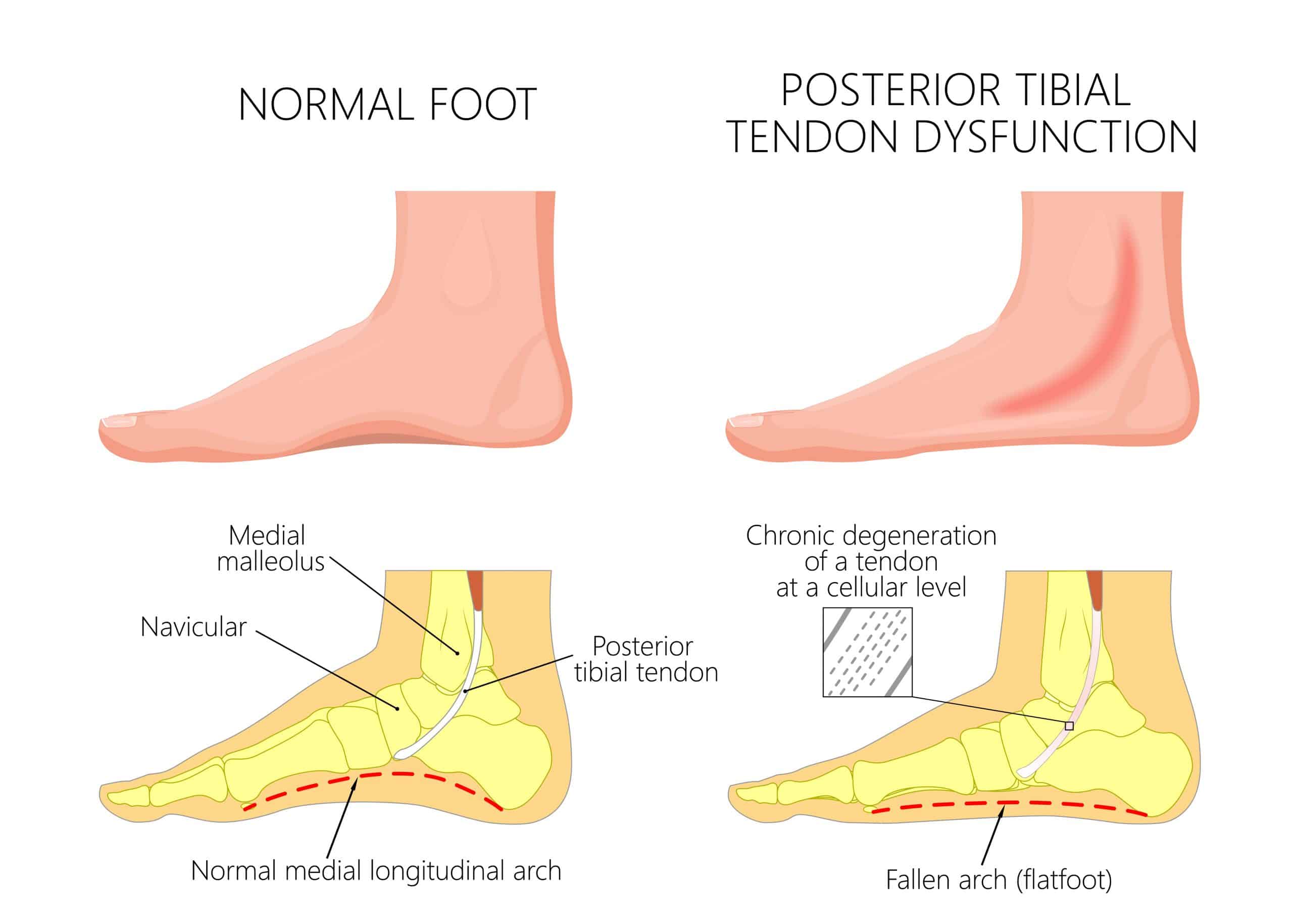
The Posterior tibial tendon is a long, narrow tendon that runs down the inside of your shin, connecting to the foot’s medial arch.
The primary function of the Posterior Tibial Tendon is to act as a stabiliser of the inner ankle when walking or running and plays a significant role in the eccentric phase of pronation when running.
As a result, a sudden increase in running volume, repetitive overload, or a change in running speed or volume can cause inner ankle pain during or after running.
It may be constantly painful in acute presentations, and it is typically tender and stiff when getting out of bed in the morning after exercise.
In sub-acute cases, it is more common to have a dull ache at the start of a run that eases as the tendon warms up.
Treatment can consist of strengthening exercises, and load modification, such as increasing the rest days between runs and reducing the speed or hill sessions in a training plan.
Other treatment methods may include changes in footwear, custom insoles, and gait analysis.
The Flexor Hallucis Longus Tendon runs down the inner ankle. Its primary function is to flex the big toe, which plays a crucial role in propulsion when walking and running.
An overload of this tendon can lead to Flexor Hallucis Longus Tendonitis. Alongside runners, Flexor Hallucis Longus Tendonitis is very common in dancers and those with big toe arthritis.
Pain is located in the inner ankle when running, while sometimes it may move further down the underside of the foot where it connects to the big toe. It may be stiff and tender at the start of a run, easing as it warms up. It can often be painful and stiff in the morning after a run.
The first line of treatment is a strengthening program guided by a Physiotherapist. It can be helpful to modify your training regime to increase rest days between runs. Changes in footwear and a reduction in hill training can also be helpful.
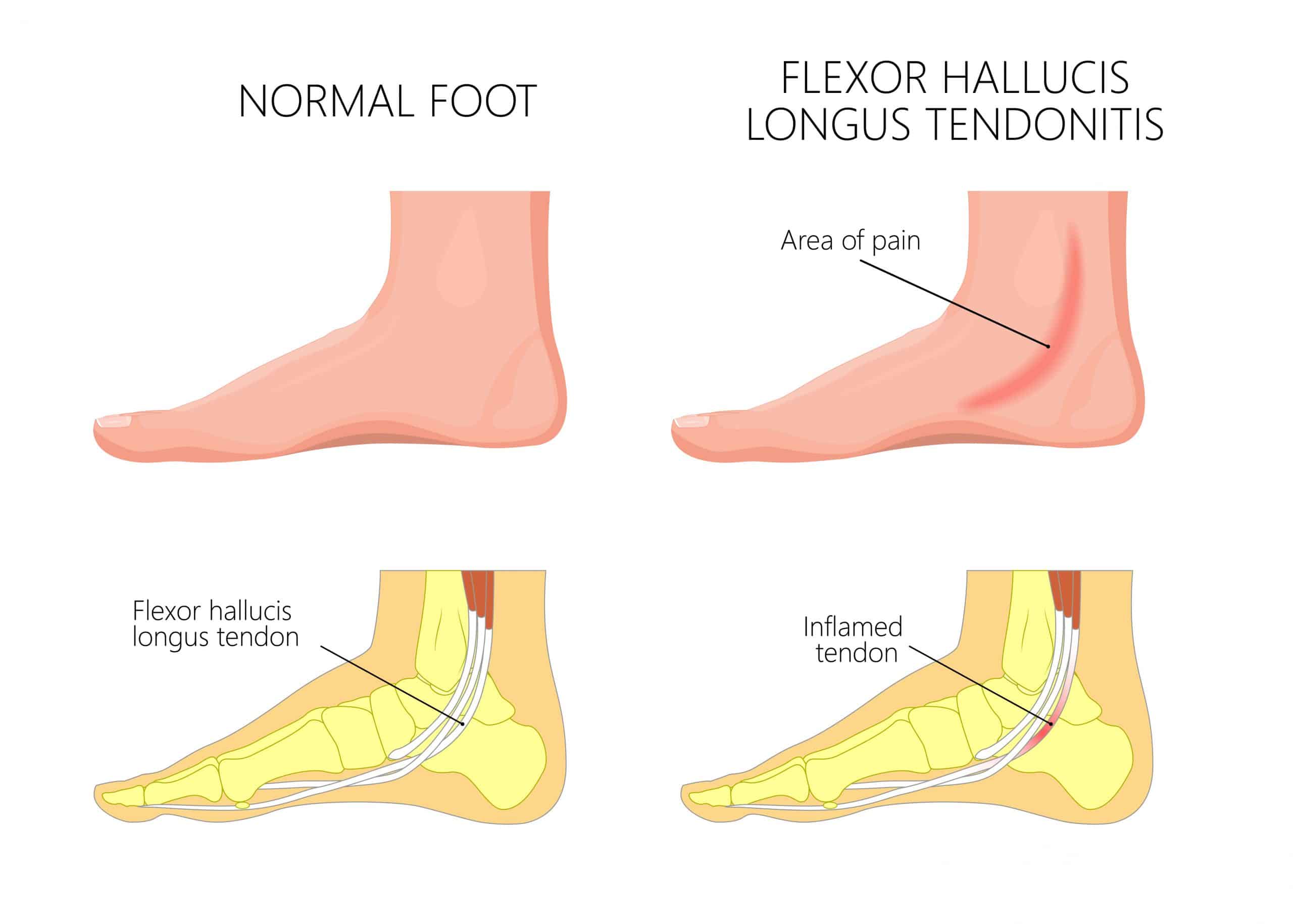
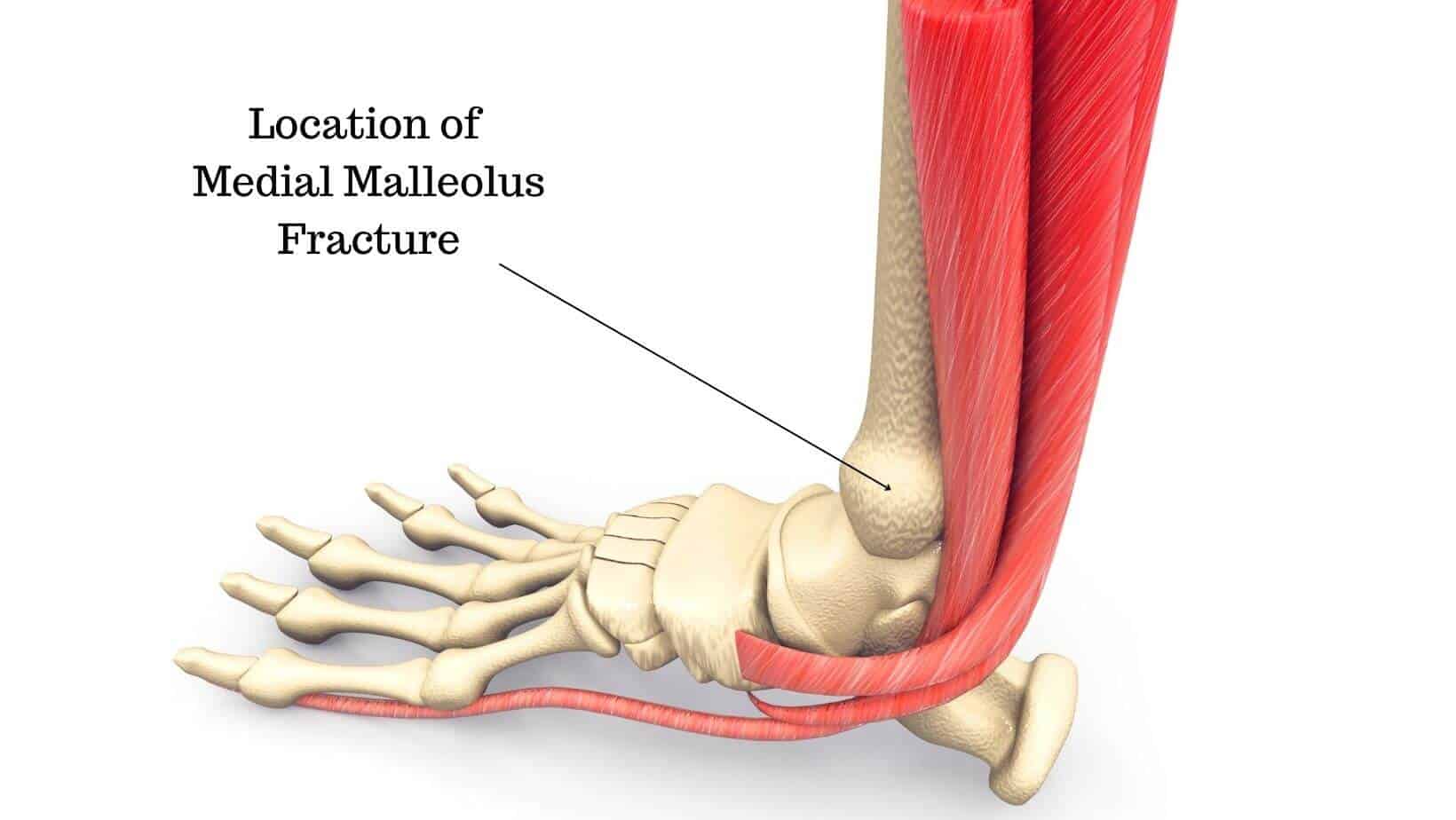
The Medial Malleolus is the protruding bone on the inner ankle. The Medial Malleolus plays a significant role in weight bearing when running, and running styles that place more weight through the medial ankle can cause a Medial Malleolus stress fracture. This is more common in those with low bone density or vitamin D levels.
Onset can develop suddenly during a run, or patients often report constant pain after a run. It is often painful with all weight-bearing activities, and the area may have bruising and swelling. The bone is often tender to touch or tap around the site of injury,
An X-ray usually achieves diagnosis; if it fails to pick up a Medial Malleolus Fracture, an MRI or CT-Scan usually are performed.
Treatment usually consists of 4-6 weeks in a boot, and blood tests may be requested to check vitamin levels. 4-6 weeks of Physical Therapy are carried out once the boot is removed.
The posterior tibial nerve runs down the inner shin bone and wraps around the inner ankle through a tarsal tunnel. Sub-optimal biomechanics or a traumatic event such as a medial ankle sprain when running can lead to compression of the posterior tibial nerve and sharp burning pain in the inner ankle leading to Tarsal Tunnel Syndrome.
If there is no trauma, treatment includes gait analysis, stability exercises, mobilisations by a Physiotherapist, and, in some cases, custom insoles.
In irritable cases, an injection may be required to reduce inflammation in the area.
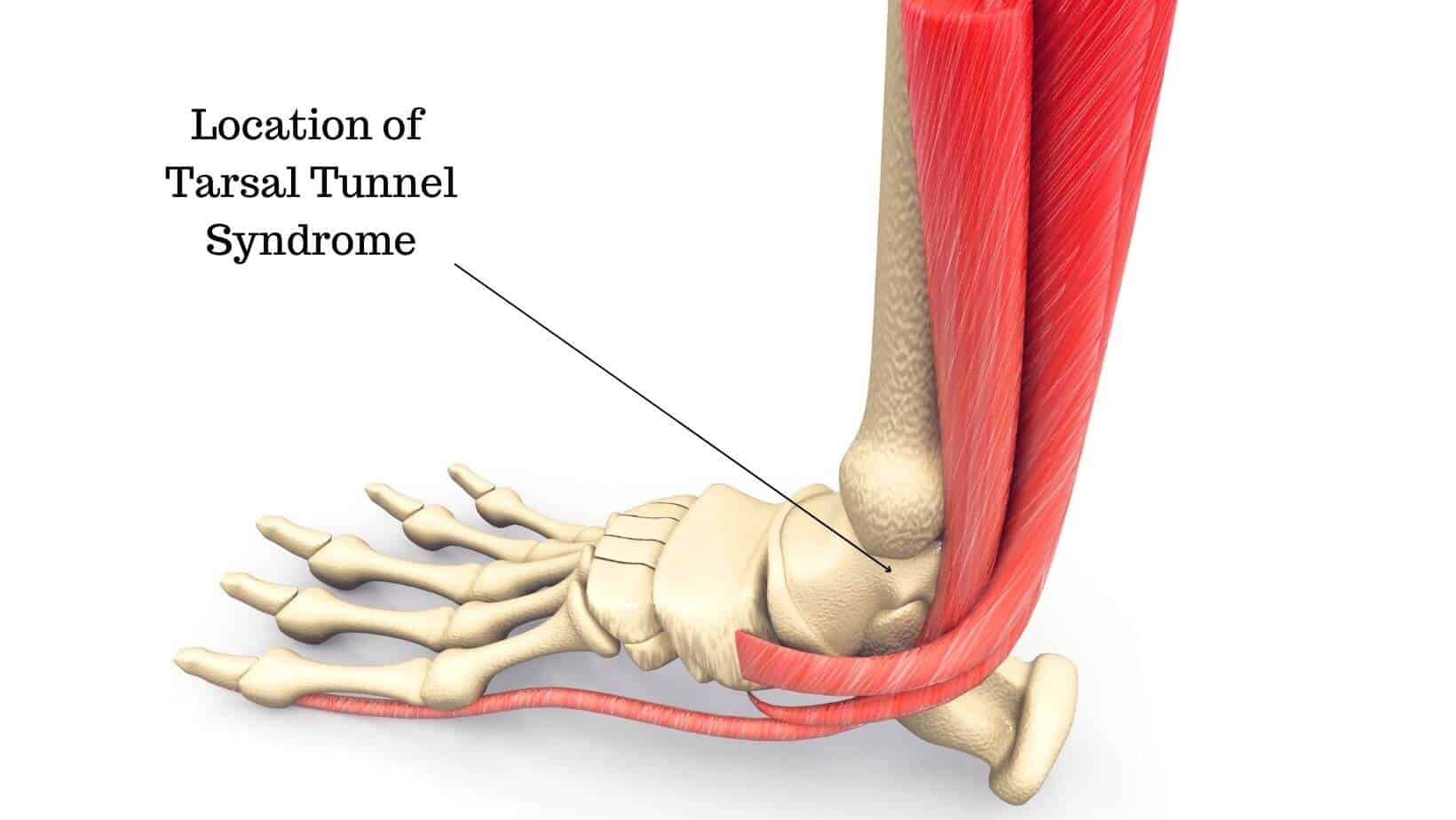
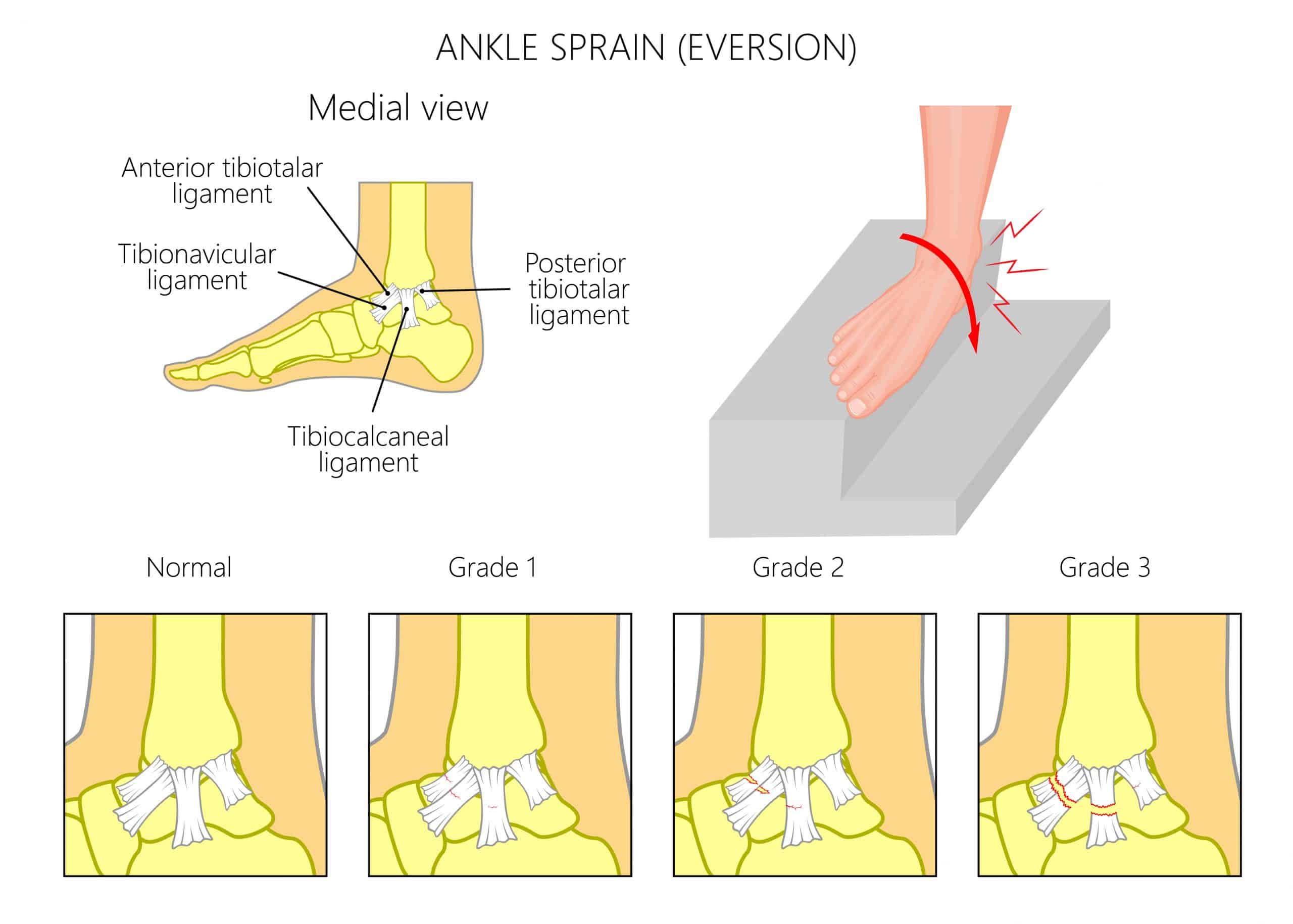
The Deltoid ligaments connect the medial malleolus to the talus bone. The deltoid ligaments are a robust web of connective tissue, and together with the articulation of the surrounding joint, they provide tremendous stability to the inner ankle.
Rolls or twists on uneven pavements can lead to stress being placed on the deltoid ligaments. This can also occur from running on a camber. Irritation of the deltoid ligaments can lead to synovitis on the inner ankle, causing pain deep within the medial ankle joint.
A Physical Therapist’s treatment includes ankle mobilisations, stretches, strengthening exercises, and stability exercises.
Modifications to training and changes in the footwear of custom insoles may be required to offload the inner ankle when running.
Physiotherapy with James McCormack
This article is written by James McCormack, a Lower Limb Specialist who is an expert in treating ankle pain.
This is not medical advice. We recommend a consultation with a medical professional such as James McCormack if you are experiencing any of the symptoms discussed in this article. James offers Online Physiotherapy Appointments weekly and face-to-face appointments in his London clinic.